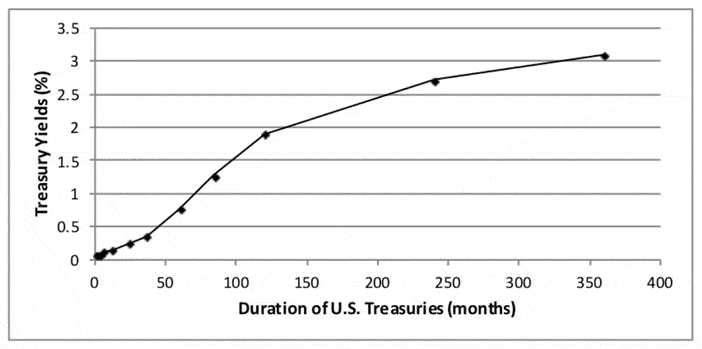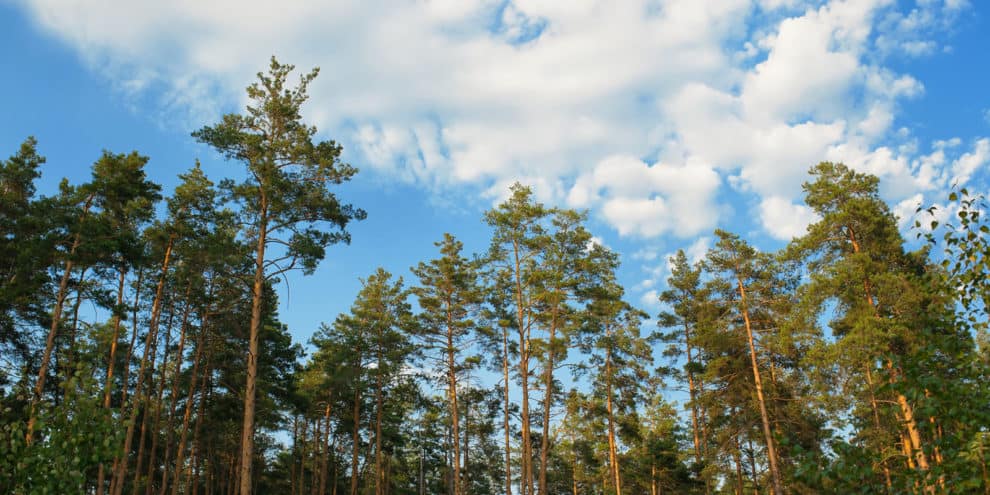My older daughter* likes to tell the following joke:
“Why did the banker quit his job?”
“Because he lost interest.”
This came to mind while reading a recent article on the power of yield curves to “predict” recessions (“What’s the Yield Curve?” by Matt Phillips, NYT, 6/25/18). For me, a key point reinforced the practical implications of interest rates that ‘get out of line.’ Decisions critical to the growth and integrity of our economy, including capital investments and pension obligations and debt financing, reference the yield curve as a guide and justifier.
When the yield curve flattens or (ominously) inverts, we lose interest. This has implications for investment returns and asset values including on timberlands and timber REITs. Before exploring these implications, let’s revisit the role of yield curves.
Yield Curve Refresher
Treasury yields refer to the total amount of money you earn when holding U.S. Treasury bills, notes or bonds sold by the Treasury Department. Remember: yields fall when demand increases for Treasuries, which investors view as safe investments. As with timberlands, when prices go up, expected returns on capital invested go down.
Also, we care about Treasury yields because when they rise, so do interest rates on mortgages and business loans. This increases the cost of building and buying homes (which affects the demand for building products such as lumber and structural panels).
Typically, the government offers higher yields for longer maturities. Why? Because investors require higher returns for locking up their capital for longer periods. The figure below provides a sample yield curve based on U.S. Treasuries as of March 5, 2013.

What do analysts look for? A steep yield curve, for example, where long-term yields far exceed short-term yields, signals the start of an economic expansion. When investors expect economic growth, they also anticipate higher inflation and interest rates, which may lead them to sell their long-term bonds. This drives down the price of bonds and boosts yields.
Alternately, an “inverted yield curve”, where short-term yields temporarily exceed longer-term yields of bonds with the same credit quality, can signal an economic recession. Inverted Treasury yields occurred in April 2000, prior to the 2001 recession, and in January 2006, prior to the 2007 recession. Currently, rates have been rising and the yield curve continues to flatten, raising concerns about inversions and recessions.
Timberland Investment Return Implications
In our world, U.S. Treasuries remain a common benchmark for timberland investments. Why? Relative safety and low risk over long time frames. Institutional investors look at Treasuries and think, “well, we need to generate AT LEAST those numbers for taking on timberland assets.” However, U.S. Treasuries, thanks to a robust secondary market, are more liquid than private timberlands, making them convenient benchmarks for publicly traded timber REITs, as well.
For reference as of Friday June 22:
- Timber REITs (CTT, PCH, RYN and WY) generated dividend yields ranging from 2.82% to 4.46%.
- Private timberlands returned 3.63% in 2017.
- U.S. 10 and 30-year Treasuries yielded 2.90% and 3.04% respectively.
*She’s 11. Blame me for her sense of humor.
This content may not be used or reproduced in any manner whatsoever, in part or in whole, without written permission of LANDTHINK. Use of this content without permission is a violation of federal copyright law. The articles, posts, comments, opinions and information provided by LANDTHINK are for informational and research purposes only and DOES NOT substitute or coincide with the advice of an attorney, accountant, real estate broker or any other licensed real estate professional. LANDTHINK strongly advises visitors and readers to seek their own professional guidance and advice related to buying, investing in or selling real estate.










Add Comment